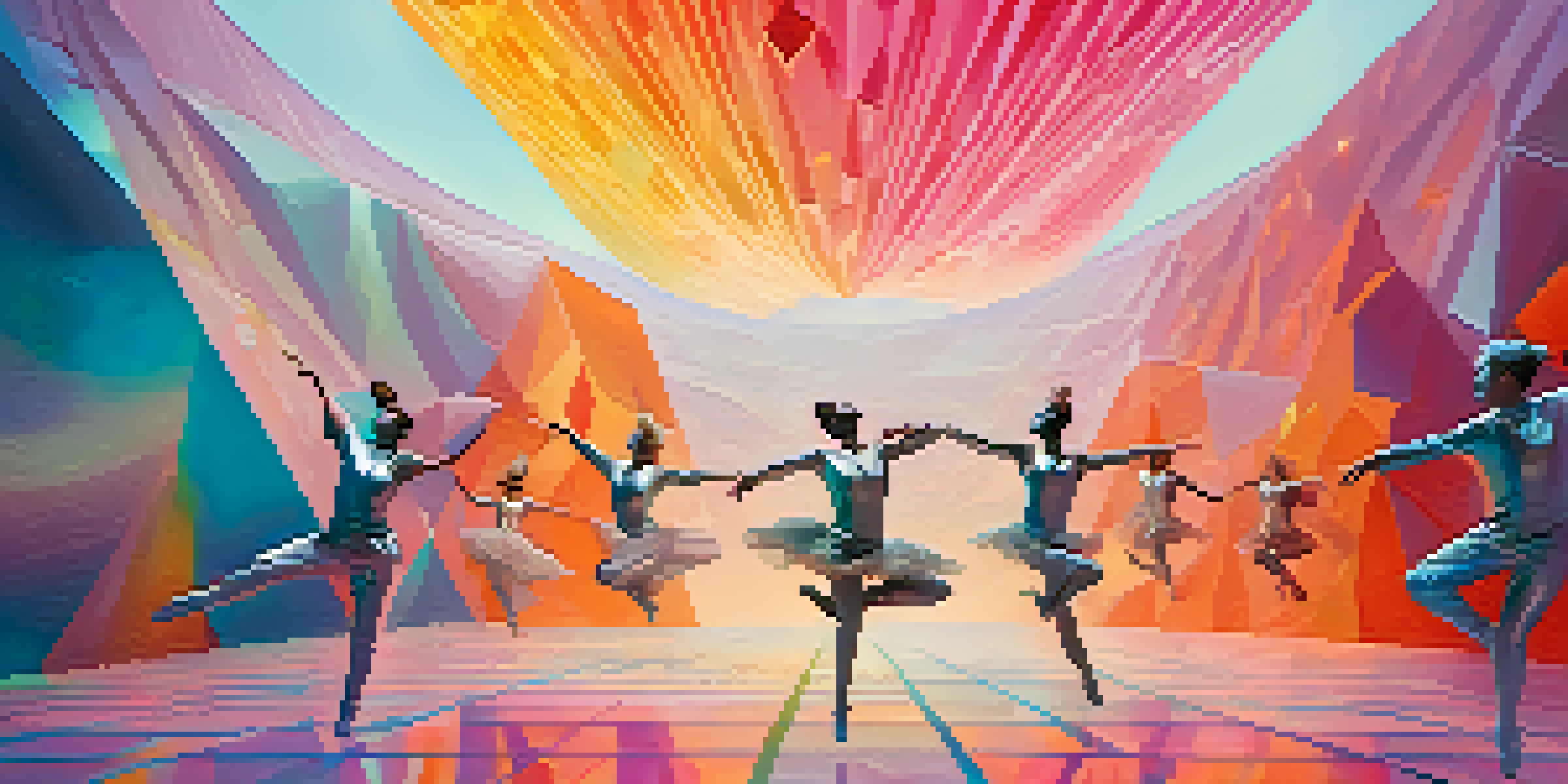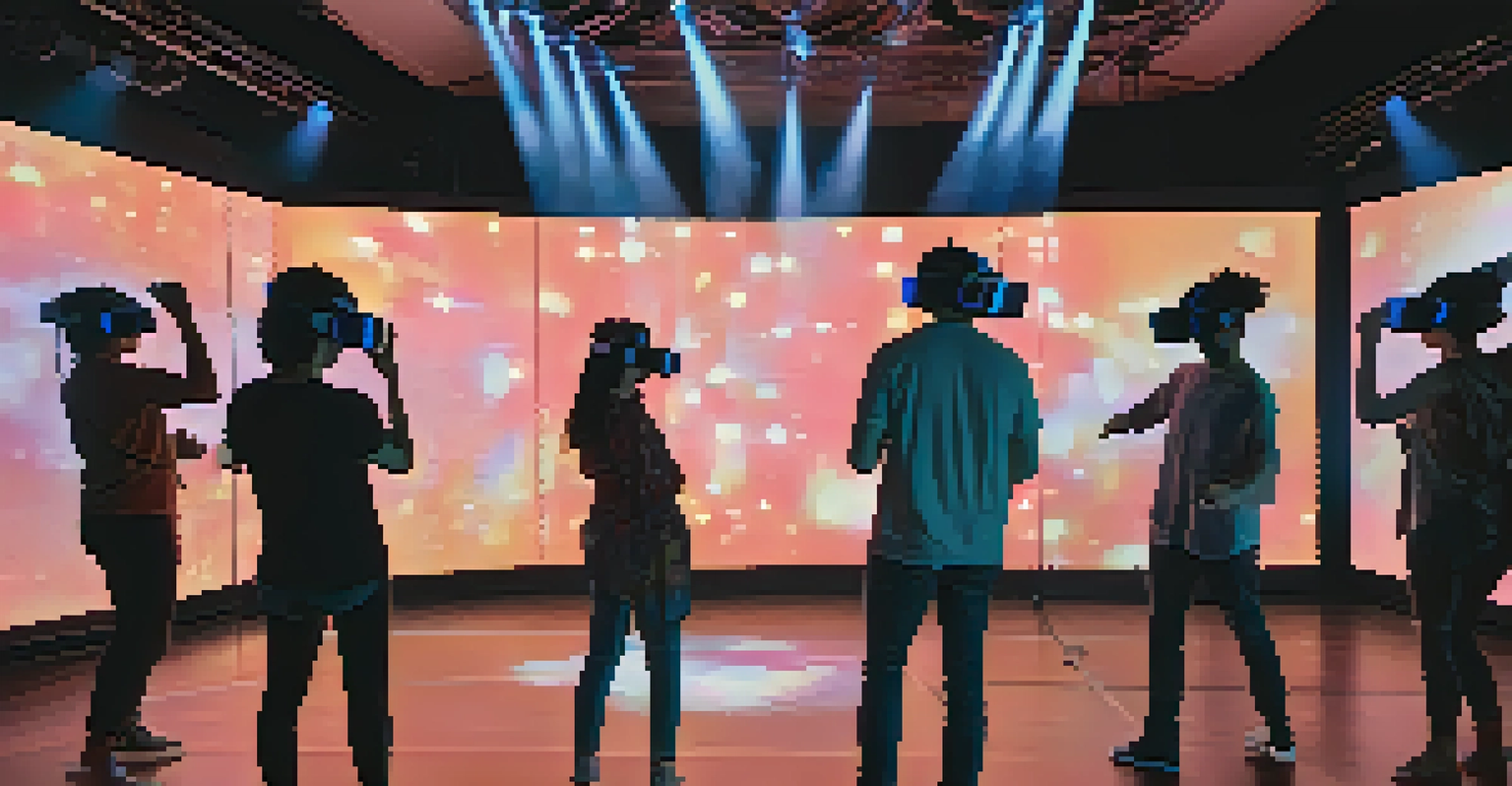Virtual Reality: A New Dimension for Dance Performance and Art

Introduction to Virtual Reality in the Arts
Virtual reality (VR) is reshaping the landscape of artistic expression, particularly in dance and performance art. It offers creators new tools to push boundaries and engage audiences in immersive experiences. By blending technology with creativity, artists can transport viewers into entirely different worlds, making art not just a visual experience, but a multi-sensory journey.
The future is already here — it's just not very evenly distributed.
Imagine stepping into a space where gravity doesn't exist, and dancers can float or leap in ways that defy real-life limitations. This is the magic of VR—where the laws of physics can be bent, allowing for innovative choreography that captivates the imagination. Artists can explore themes, emotions, and narratives in ways that traditional mediums simply can't match.
As VR technology becomes more accessible, we are witnessing an explosion of creativity in the arts community. Dance performances are evolving from mere stage shows to interactive experiences, inviting audiences to participate in the story rather than just observe. This new dimension is not only engaging but also expanding the definition of what art can be.
The Impact of VR on Dance Choreography
Choreographers are increasingly utilizing VR to visualize and develop their pieces in a three-dimensional space. This capability allows them to experiment with formations and movements in a way that was previously impossible. Instead of relying solely on a physical studio, they can create and manipulate dance sequences in a virtual environment.

For instance, a choreographer can program a dance routine where dancers perform simultaneously in multiple locations, creating a stunning visual tapestry. This opens up collaborative possibilities that transcend geographic boundaries, enabling remote artists to contribute to a performance without being physically present. The result is a rich, layered experience that can enhance storytelling in dance.
VR Transforms Artistic Expression
Virtual reality is revolutionizing the arts, particularly dance, by creating immersive experiences that engage audiences in unprecedented ways.
Moreover, VR enables choreographers to test their ideas in real-time, making adjustments and seeing immediate results. This iterative process can lead to more innovative and refined performances, as artists can push their creative limits without the constraints of physical space or resources.
Enhancing Audience Engagement with Immersive Experiences
One of the most exciting aspects of VR in dance is its ability to engage audiences in a deeply immersive way. Viewers can not only watch a performance but become part of it, stepping into the world created by the artists. This level of involvement transforms passive spectators into active participants, making the experience more memorable and impactful.
Art is the most beautiful of all lies; it is a truth that reveals itself only to those who are willing to see it.
For example, audiences can don VR headsets and find themselves dancing alongside virtual avatars or exploring the environment where the performance takes place. This interaction fosters a sense of connection between the audience and the art, allowing for a more profound emotional response. By breaking down the barriers between performer and viewer, VR creates a shared space for exploration.
Additionally, the opportunity for audiences to revisit performances in a virtual setting adds another layer of engagement. Viewers can experience the work from different angles and perspectives, deepening their understanding and appreciation of the art form. This accessibility can attract a broader audience, including those who might not typically attend live performances.
The Role of Technology in Artistic Expression
Technology has always played a significant role in the evolution of the arts, and VR is the latest frontier in this ongoing journey. It allows artists to explore new mediums and methods of storytelling, often merging dance with digital art, sound design, and interactive elements. This integration leads to innovative performances that challenge conventional definitions of art.
For instance, an artist might create a VR dance piece that incorporates animated visuals responding to the movements of the dancers. This synergy creates a multi-layered experience where dance, visual art, and music coexist in harmony, enhancing the overall impact of the performance. Such collaborations can lead to new artistic movements and redefine how we perceive and engage with art.
Innovative Choreography with VR
Choreographers leverage VR technology to visualize and manipulate dance sequences in a three-dimensional space, enhancing creativity and collaboration.
Moreover, as VR technology advances, the potential for artistic expression continues to grow. Artists can experiment with augmented reality (AR) elements or even artificial intelligence (AI) to create dynamic performances that evolve in real-time based on audience interactions. This kind of innovation keeps the art scene fresh and exciting, inviting continuous exploration.
Challenges and Limitations of VR in Dance
While the potential of VR in dance is immense, it does come with its challenges. One significant hurdle is the technical learning curve associated with VR technology. Artists and choreographers must invest time and resources to master the tools and software, which can be daunting for those not familiar with technology.
Additionally, creating a fully immersive VR experience requires substantial financial investment. High-quality VR equipment, software licenses, and the expertise to develop content can be expensive, making it less accessible for independent artists or smaller companies. This disparity can lead to a divide in the art community, where only those with resources can fully explore the possibilities of VR.
Furthermore, there are concerns about the physical effects of VR on audiences. Extended use of VR headsets can lead to discomfort or motion sickness for some viewers. Artists must consider these factors when designing experiences, ensuring that their work is enjoyable and accessible to a diverse audience.
Future Trends in VR Dance and Art
As we look to the future, the integration of VR in dance and art is likely to expand even further. With continuous advancements in technology, we can expect more realistic and immersive experiences that blur the lines between the virtual and physical worlds. This evolution could lead to the emergence of entirely new genres of performance art, driven by innovation.
Additionally, collaborations between technologists and artists will become increasingly common, fostering a creative dialogue that pushes the boundaries of both fields. Imagine a world where dancers can collaborate with game developers to create interactive performances that evolve based on audience choices. These cross-disciplinary partnerships could lead to groundbreaking works of art that redefine how we experience performance.
Audience Engagement Through Immersion
VR allows audiences to actively participate in performances, transforming them from passive viewers to engaged participants in the artistic experience.
Moreover, as VR technology becomes more mainstream, we may see a shift in how performances are produced and consumed. Live-streaming VR performances could allow people from all over the globe to experience a show in real-time, creating a shared experience that transcends geographical limitations. This accessibility will be crucial in broadening the reach of dance and performance art.
Conclusion: Embracing the New Frontier
In conclusion, virtual reality is ushering in a new era for dance and performance art, offering endless possibilities for creativity and expression. By merging technology with artistic vision, artists can create immersive experiences that engage audiences like never before. As we continue to explore this new frontier, it’s essential to embrace both the opportunities and challenges that come with it.
The journey into VR is one of discovery, where artists can experiment and innovate beyond traditional boundaries. By fostering collaboration and encouraging dialogue among creators, technologists, and audiences, we can unlock the full potential of this exciting medium. The future of dance and art in virtual reality is bright, and it promises to be a thrilling ride.

As we venture forward, let us celebrate the fusion of art and technology, recognizing that each new step in the world of VR contributes to a richer, more diverse artistic landscape. So, whether you're a dancer, a choreographer, or an art enthusiast, keep your eyes peeled—there's a whole new dimension of creativity waiting to be explored!